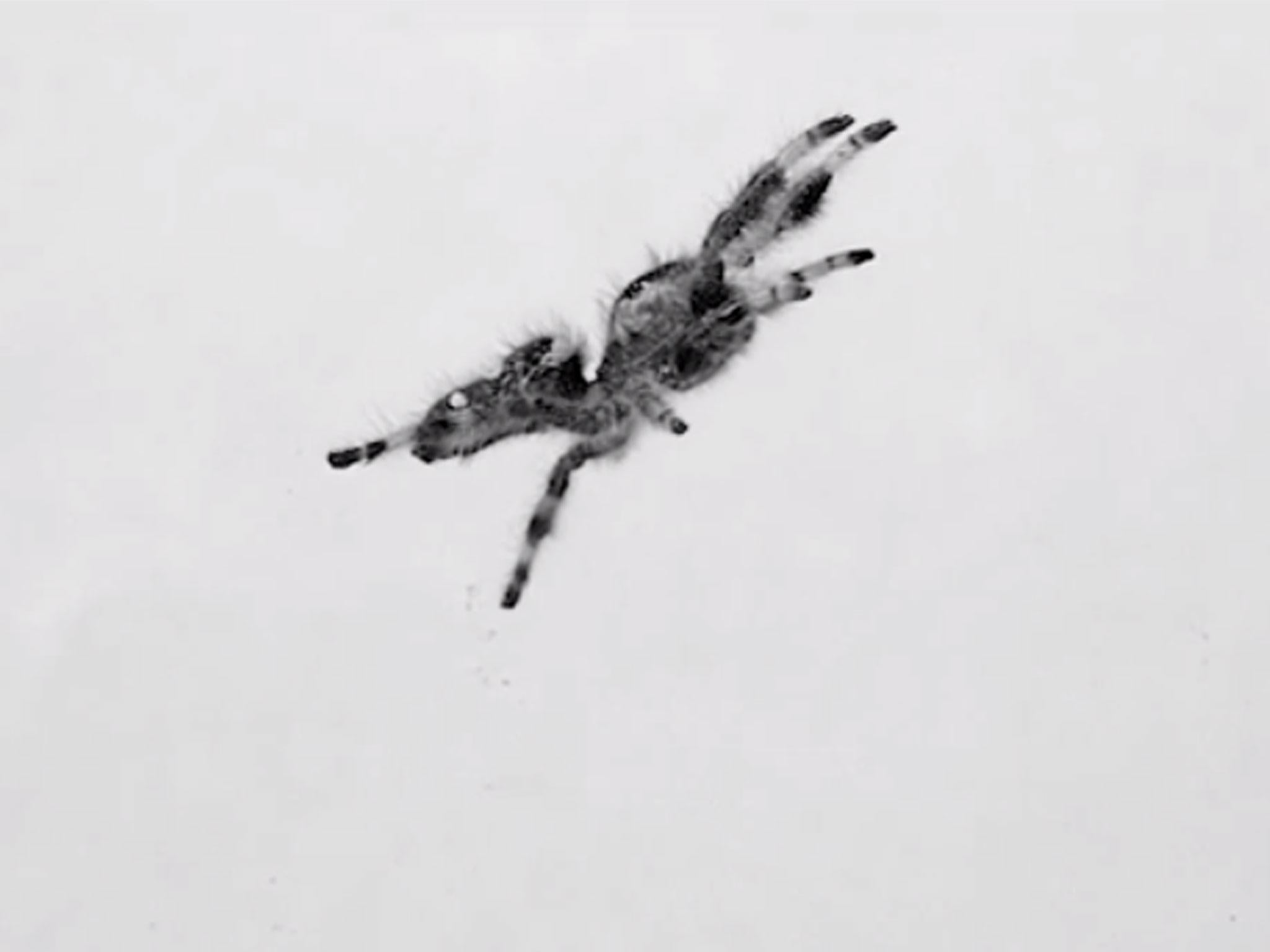Spiders trained to jump on demand in major robotic engineering breakthrough
Arachnids able to leap up to six times their body length
A spider called Kim has been trained to jump on demand by scientists keen to learn the secrets of her acrobatic ability.
The circus act study could help engineers design agile mini-robots that are currently beyond human technology.
Kim is a “regal jumping spider”, Phidippus regius, a species famed for its astonishing leaps.
Jumping spiders, which measure up to two centimetres across, are able to bound up to six times their body length from a standing start. In comparison, the best a human can achieve is about 1.5 body lengths.
At takeoff, the force on the spider’s legs is equivalent to five times the creature’s body weight.
Lead scientist Dr Mostafa Nabawy, from the University of Manchester, said: “This is amazing and if we can understand these biomechanics we can apply them to other areas of research.”

Dr Nabawy’s team trained Kim to jump different heights and distances on a manmade laboratory platform.
Her jumps were recorded using ultra-high-speed cameras. The scientists also took micro-CT scans of the spider to create a 3D virtual model of her legs and body structure.
The results, published in the journal Scientific Reports, show that Kim used different jumping strategies depending on the challenge she was presented with.
For short distances she favoured a faster, lower trajectory, which used up more energy but minimised flight time. This made the jump more accurate and effective for capturing prey.
Longer distance jumps of the sort used to cross rough terrain were slower and more energy efficient.
Insects and spiders jump in a number of different ways, using a spring-like mechanism, direct muscle forces, or internal fluid pressure.
Spiders are known to use the hydraulic fluid pressure system to extend their legs, but what role this played in jumping was unknown.
Study co-author Dr Bill Crowther, also from the University of Manchester, said: “Our results suggest that whilst Kim can move her legs hydraulically, she does not need the additional power from hydraulics to achieve her extraordinary jumping performance.
“Thus, the role of hydraulic movement in spiders remains an open question.”
PA
Join our commenting forum
Join thought-provoking conversations, follow other Independent readers and see their replies
Comments
Bookmark popover
Removed from bookmarks